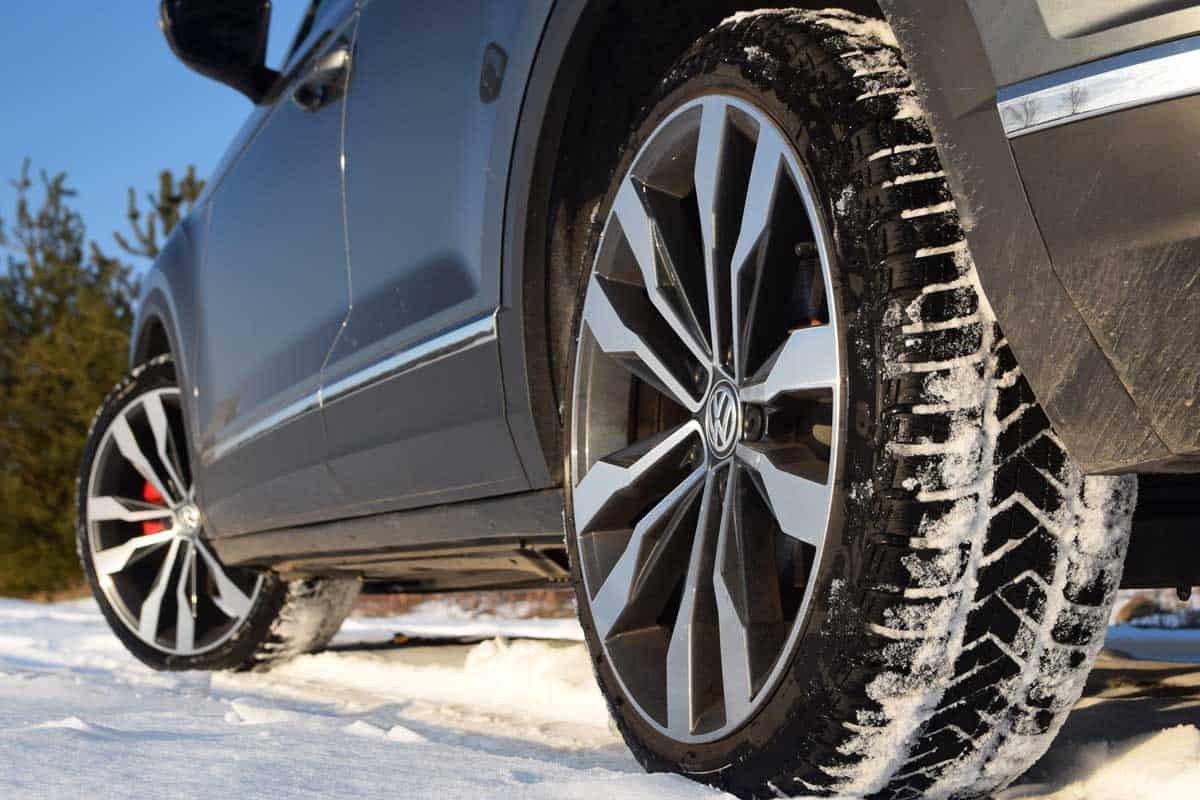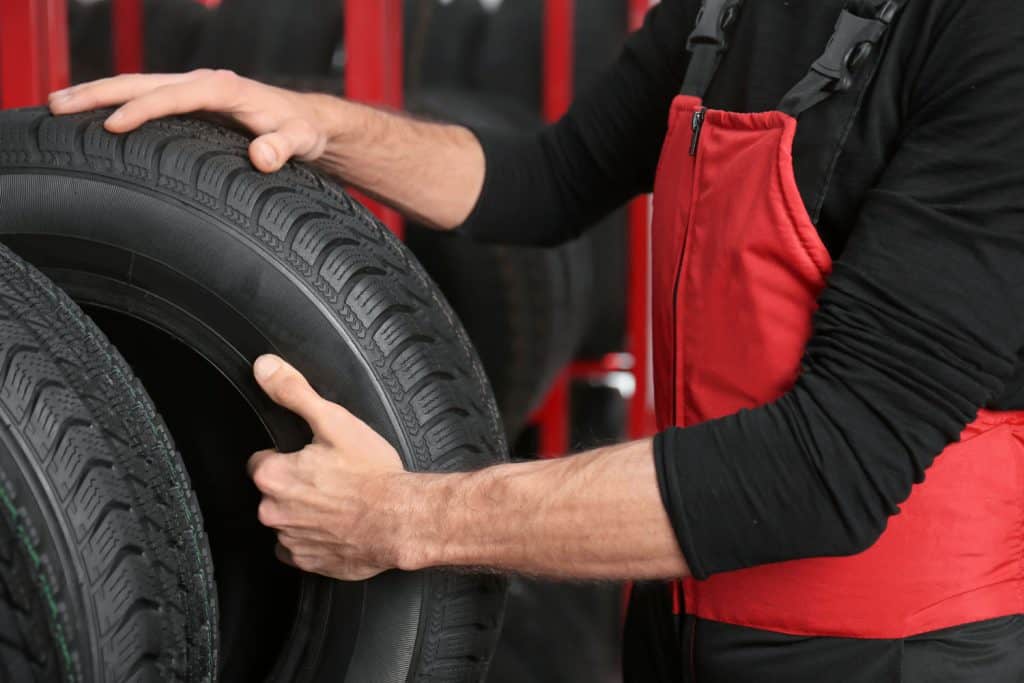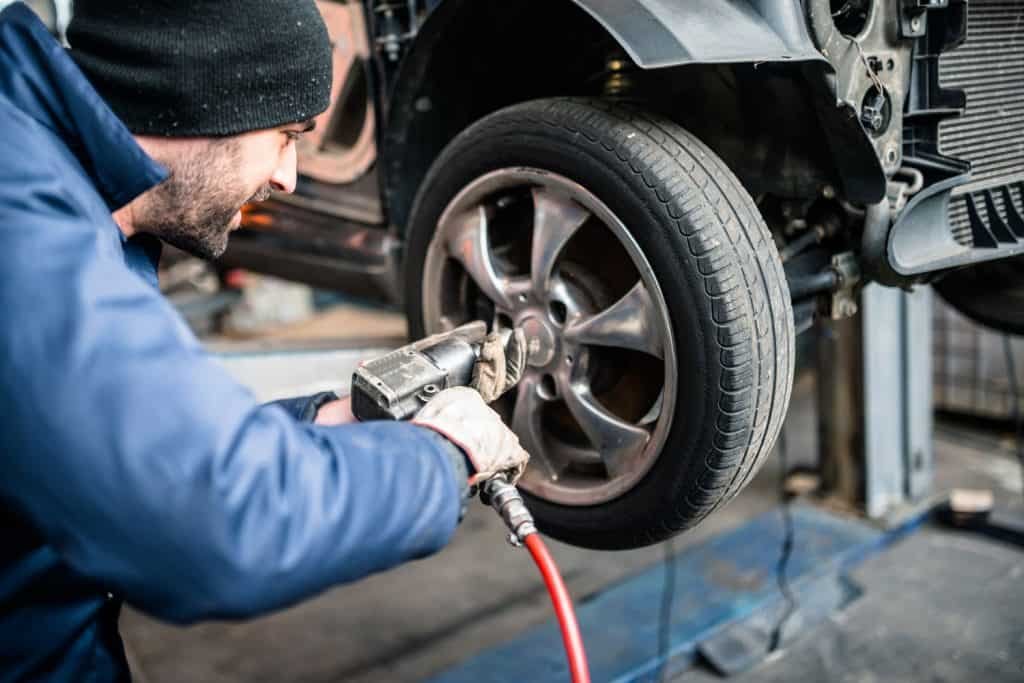Tires are one of the most critical parts of a vehicle. Without the tires and, of course, the engine, you can't go anywhere. However, how tires should be mounted can be confusing. For example, are the tires you bought directional or non-directional? And how do you know? We've looked into this to help answer that question.
In today's tire market, consumers can purchase either directional (unidirectional) or non-directional (symmetrical or bias ply) tires. In order to tell if your tires are directional or non-directional, look at the sidewall of the tire. If there is an arrow pointing to the vehicle's front, words stating "This Side Out," or V-shaped tread toward the tire's center, these signs indicate directional tires. If you do not observe these signs on your tires, they are more than likely non-directional tires.
With so many types of tires on the market, it is hard to know everything about them. For example, it's hard to know if you should buy all-weather tires or winter tires. Then do you get directional tires or non-directional tires? What does that even mean, and which tires fall in each category? This article will look at these tire types and how to know the difference, so keep reading!
![Summer car tires on over blue sky with clouds, Are Car Tires Directional Or Non-Directional? [And How To Tell]](https://vehq.com/wp-content/uploads/2021/10/Are-Car-Tires-Directional-Or-Non-Directional-And-How-To-Tell-683x1024.png)
Are Car Tires Directional Or Non-directional?
Directional tires are also known as unidirectional tires. These tires are built with a specific orientation of the tire's sidewall, indicating the direction of travel. This is done by depicting an arrow on the tire pointing in the direction you are traveling. The opposite side has no arrow.
They also may have words reading "This Side Out." In addition, directional tires will have the tread going in one direction in the shape of a "V" forming to the center of the tire. They must always be mounted this way for the tire to give the driver an optimal performance on wet or dry roads.
You can use directional tires for front-wheel, rear-wheel, and 4x4 vehicles because of their asymmetrical design. In addition, you can use them in both summer and winter because they have a high level of grip in both cold and hot temperatures. They also will help in wet situations where you have chances of hydroplaning.
All-season Tires
All-season tires are also known to have directional tread. They are designed to perform well in all weather types, hence the name all-season. It is for this reason that you can use them in both summer and winter.
All-season tires are also built to reduce fuel consumption like directional tires while maintaining reasonable comfort levels over imperfect road surfaces. All-season tires will help you avoid hydroplaing by allowing the water to channel through the tread. In addition, they can do well in moderate icy or slippery conditions. However, even though that most all-season tires are directional they won't give the same amount of traction in the winter conditions as winter tires will.
Winter tires will have more aggressive tread helping in icy and deep snow conditions. Nonetheless, all-season tires with a directional tread are a good choice if you don't want to purchase two different sets of tires.

Non-directional Tires
Non-directional tires are also known as symmetrical or bias ply. These tires have an even number of plies running across the tire from side to side, all with equal angles. The tread design is usually arrow-shaped but can be round or square.
It does not matter which side is up, and they can be mounted either way. Non-directional tires have a longer lifespan than directional ones because of their symmetrical design and thick tread. They are best used on front-wheel drive vehicles, as well as rear-wheel cars with limited-slip differential systems.
Does it matter which side of a tire faces out?
The answer to this question is yes, it does matter. Directional tires can only be mounted in a specific way, and the sidewall has a design to guide you. For example, if you look at your tires, you should see text on one side of the tire's sidewall that says "This Side Out."
On the other hand, if there are no words on your tire or no arrow, you should be able to determine that it is a non-directional tire. Non-directional tires can be mounted facing either direction as their tire pattern allows this.
A directional tire should only be mounted one way, requiring an arrow to indicate the direction of travel. The opposite side will not have an arrow because this is where the plies are exposed.
However, never mount directional tires upside down if the text is not present facing out. If directional tires aren't put on properly, they won't work correctly. Meaning if you get in bad weather conditions, it could put you in a dangerous situation. This is why it is better to have a professional mount your tires instead of doing it yourself.
If you are still unsure whether your tires are directional, don't hesitate to contact a local tire shop like Tire Rama. They will be more than happy to assist you in any way that they can. You may also check out a tire buying guide for more information on other topics concerning tires.

Does tire rotation affect alignment?
Alignment involves adjusting your car's suspension to level with the road and pointing in the direction you want it to go. Tire rotation coordinates how your tires wear, so they all get to wear evenly over time. Simply rotating the tires does not alter the vehicle's alignment.
Tire rotation can effectively extend your tire's life. However, your front and rear tires will wear differently over time if they aren't rotated consistently. As they wear unevenly, your tires will no longer be able to grip the road properly.
Over time, tires that have uneven tread will eventually throw off your vehicle's alignment. This can lead to hydroplaning and loss of control, especially in heavy rain conditions.

Can you reverse directional tires?
You can reverse tires only if they are non-directional ones. However, it would help if you never attempted this with directional tires because your vehicle will become increasingly difficult to handle.
You might also even damage the tire because it was made specifically for one way of rotation only. Typically, it would be best to stick to the same rotation pattern with directional tires to ensure proper wear.
Even though directional tires function better than non-directional ones in certain circumstances, you should always stick to the manufacturer's recommended tire rotation pattern for your vehicle's tires. Three essential factors involved in this pattern are driving dynamics, load capacity, and wear patterns.
Do tires have to be put on a certain way?
This depends on the type of tire you are using. Directional tires require one side to be facing outward, while non-directional tires can be placed either way without causing damage.
If no words or arrows are present on your tire, it is non-directional and should allow for either placement. You should determine if your tires are directional or not since they will often have markings on the sidewall.
What happens if you put directional tires on the wrong way?
According to Tire Buyer, if you put directional tires on the incorrect way, they won't work as they should. For example, directional tires are meant to give you more grip and traction in various weather conditions. However, if they aren't mounted correctly, they won't help you with slippage or hydroplaning situations.
In addition, putting directional tires on wrong can cause damage and strain to your vehicle. This is because the design is meant to wear in a specific direction, and having them rotate counter-clockwise could severely impact their lifespan and worsen how they handle.
Please do not attempt this with directional tires, as it will lead to irregular wear and tear that can cause your tires to become more prone to damage. If you are unsure how to mount directional tires properly, then the best thing is to have a professional take care of it on your behalf.
In Closing
It is essential to know what type of tires to put on your vehicle. It will depend on what type of road conditions you will be driving in. You can always have two different sets of tires for different seasons, such as summer and winter.
Overall, remember that directional tires will give you more grip and traction in slippery road conditions and need to be put on a particular way! The best thing to do is consult with a tire expert in your area before making a purchase.
If you like this article, you should also check out:
How To Store Tires on Rims - 4 Steps To Follow
Do Tires Lose Air WIthout The Air Valve Cap?
Do Tires Affect Acceleration, Speed, And Performance?
What is your favorite brand of tire? Leave us a comment below!
